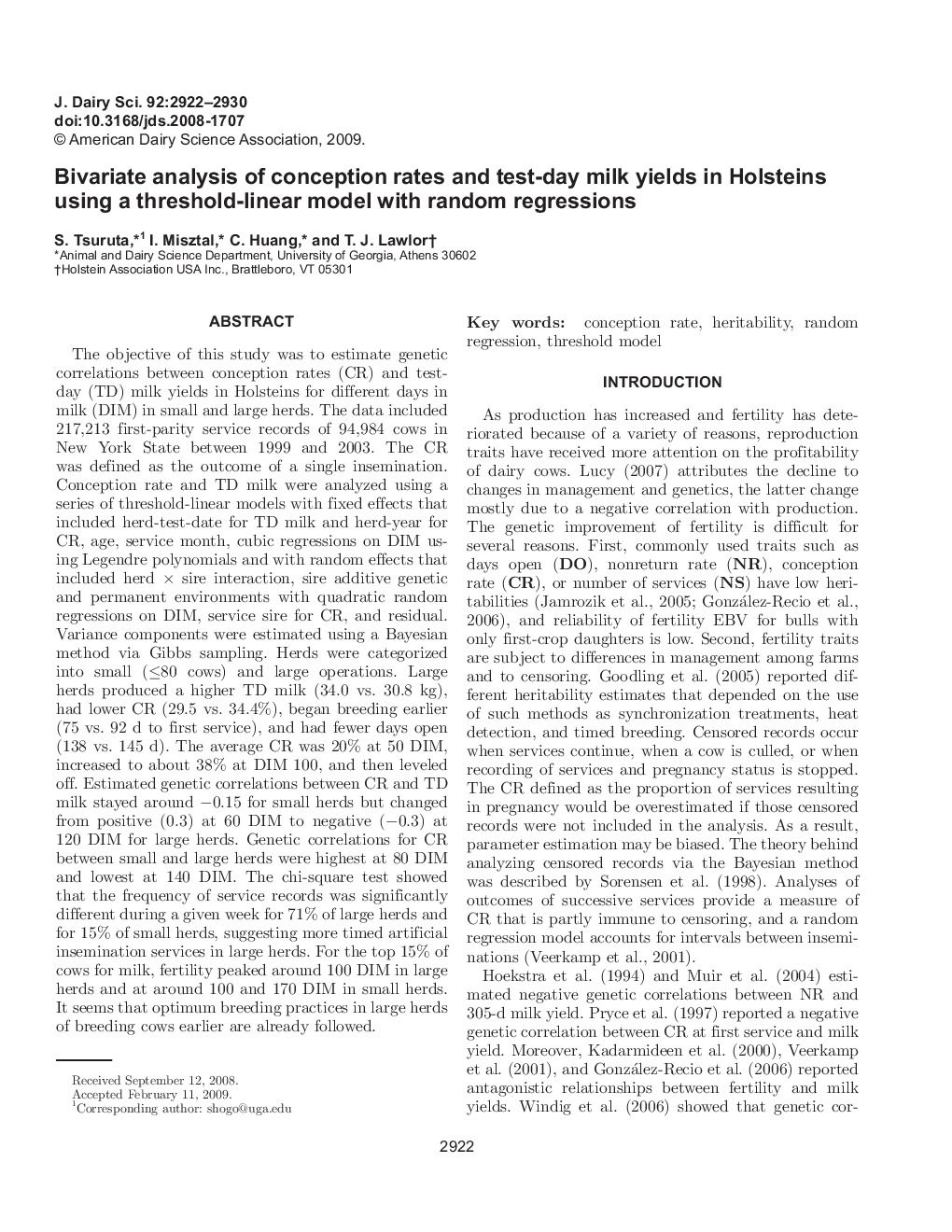| کد مقاله | کد نشریه | سال انتشار | مقاله انگلیسی | نسخه تمام متن |
|---|---|---|---|---|
| 2439313 | 1108094 | 2009 | 9 صفحه PDF | دانلود رایگان |
عنوان انگلیسی مقاله ISI
Bivariate analysis of conception rates and test-day milk yields in Holsteins using a threshold-linear model with random regressions
دانلود مقاله + سفارش ترجمه
دانلود مقاله ISI انگلیسی
رایگان برای ایرانیان
کلمات کلیدی
موضوعات مرتبط
علوم زیستی و بیوفناوری
علوم کشاورزی و بیولوژیک
علوم دامی و جانورشناسی
پیش نمایش صفحه اول مقاله

چکیده انگلیسی
The objective of this study was to estimate genetic correlations between conception rates (CR) and test-day (TD) milk yields in Holsteins for different days in milk (DIM) in small and large herds. The data included 217,213 first-parity service records of 94,984 cows in New York State between 1999 and 2003. The CR was defined as the outcome of a single insemination. Conception rate and TD milk were analyzed using a series of threshold-linear models with fixed effects that included herd-test-date for TD milk and herd-year for CR, age, service month, cubic regressions on DIM using Legendre polynomials and with random effects that included herd Ã sire interaction, sire additive genetic and permanent environments with quadratic random regressions on DIM, service sire for CR, and residual. Variance components were estimated using a Bayesian method via Gibbs sampling. Herds were categorized into small (â¤80 cows) and large operations. Large herds produced a higher TD milk (34.0 vs. 30.8 kg), had lower CR (29.5 vs. 34.4%), began breeding earlier (75 vs. 92 d to first service), and had fewer days open (138 vs. 145 d). The average CR was 20% at 50 DIM, increased to about 38% at DIM 100, and then leveled off. Estimated genetic correlations between CR and TD milk stayed around â0.15 for small herds but changed from positive (0.3) at 60 DIM to negative (â0.3) at 120 DIM for large herds. Genetic correlations for CR between small and large herds were highest at 80 DIM and lowest at 140 DIM. The chi-square test showed that the frequency of service records was significantly different during a given week for 71% of large herds and for 15% of small herds, suggesting more timed artificial insemination services in large herds. For the top 15% of cows for milk, fertility peaked around 100 DIM in large herds and at around 100 and 170 DIM in small herds. It seems that optimum breeding practices in large herds of breeding cows earlier are already followed.
ناشر
Database: Elsevier - ScienceDirect (ساینس دایرکت)
Journal: Journal of Dairy Science - Volume 92, Issue 6, June 2009, Pages 2922-2930
Journal: Journal of Dairy Science - Volume 92, Issue 6, June 2009, Pages 2922-2930
نویسندگان
S. Tsuruta, I. Misztal, C. Huang, T.J. Lawlor,